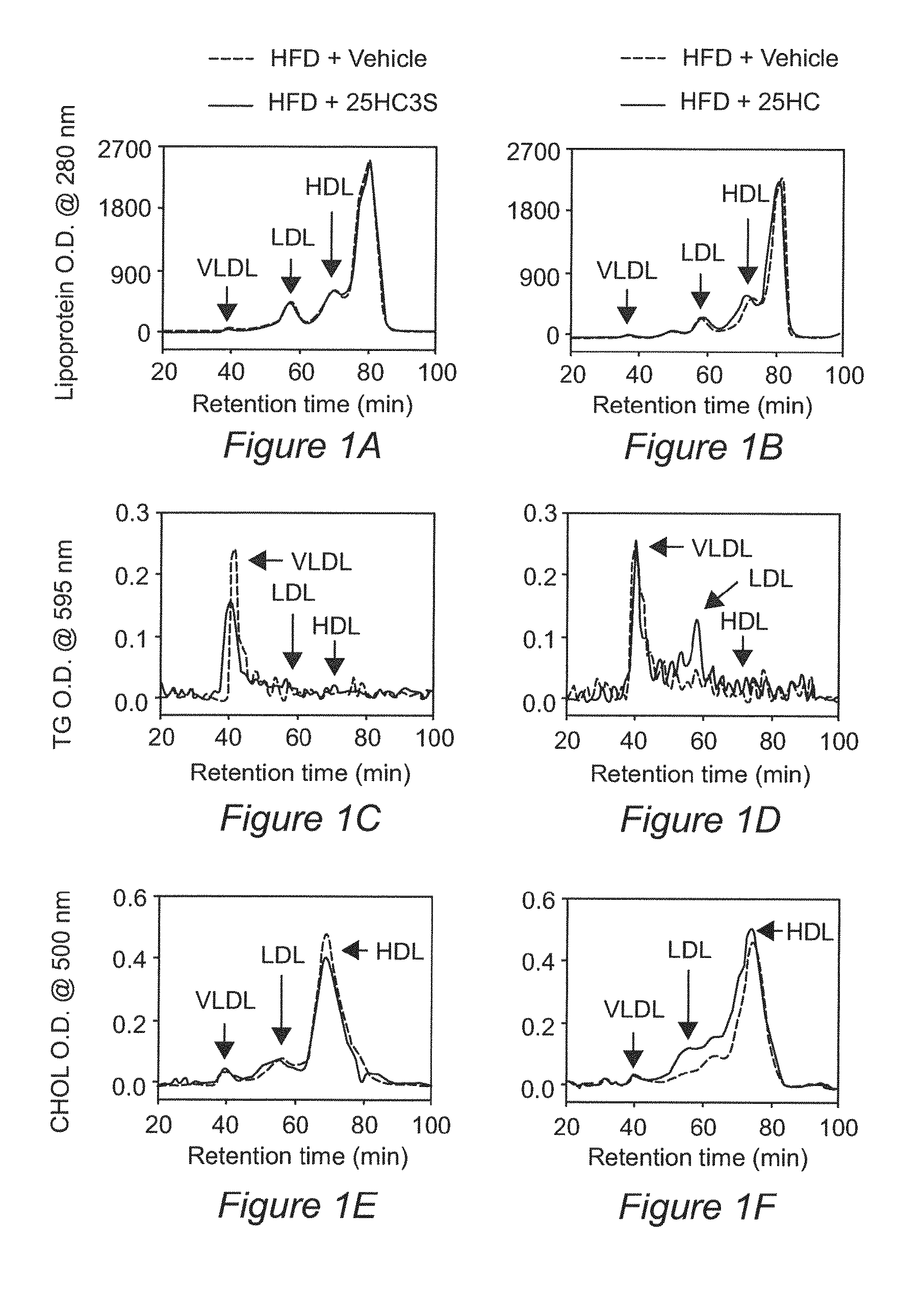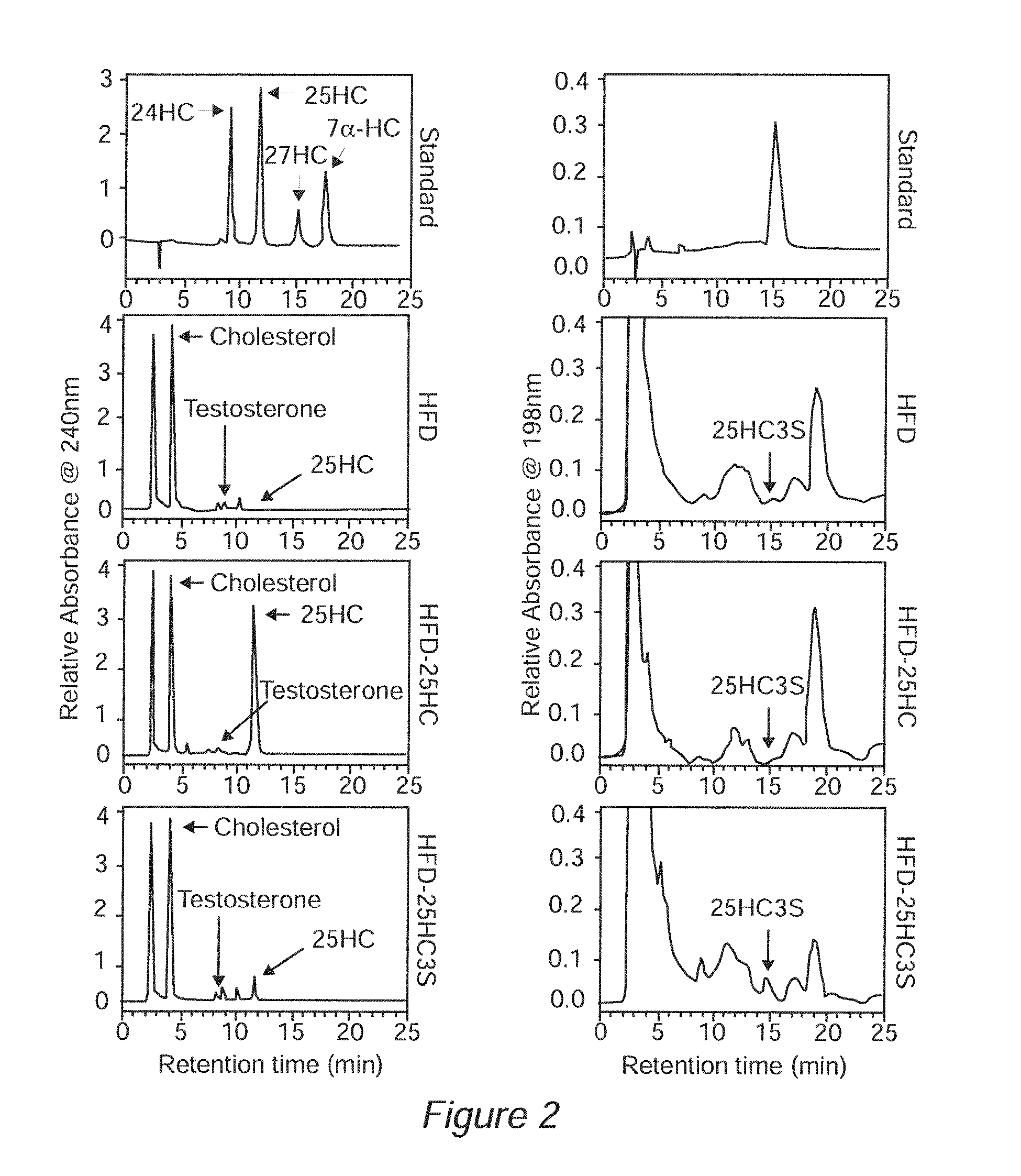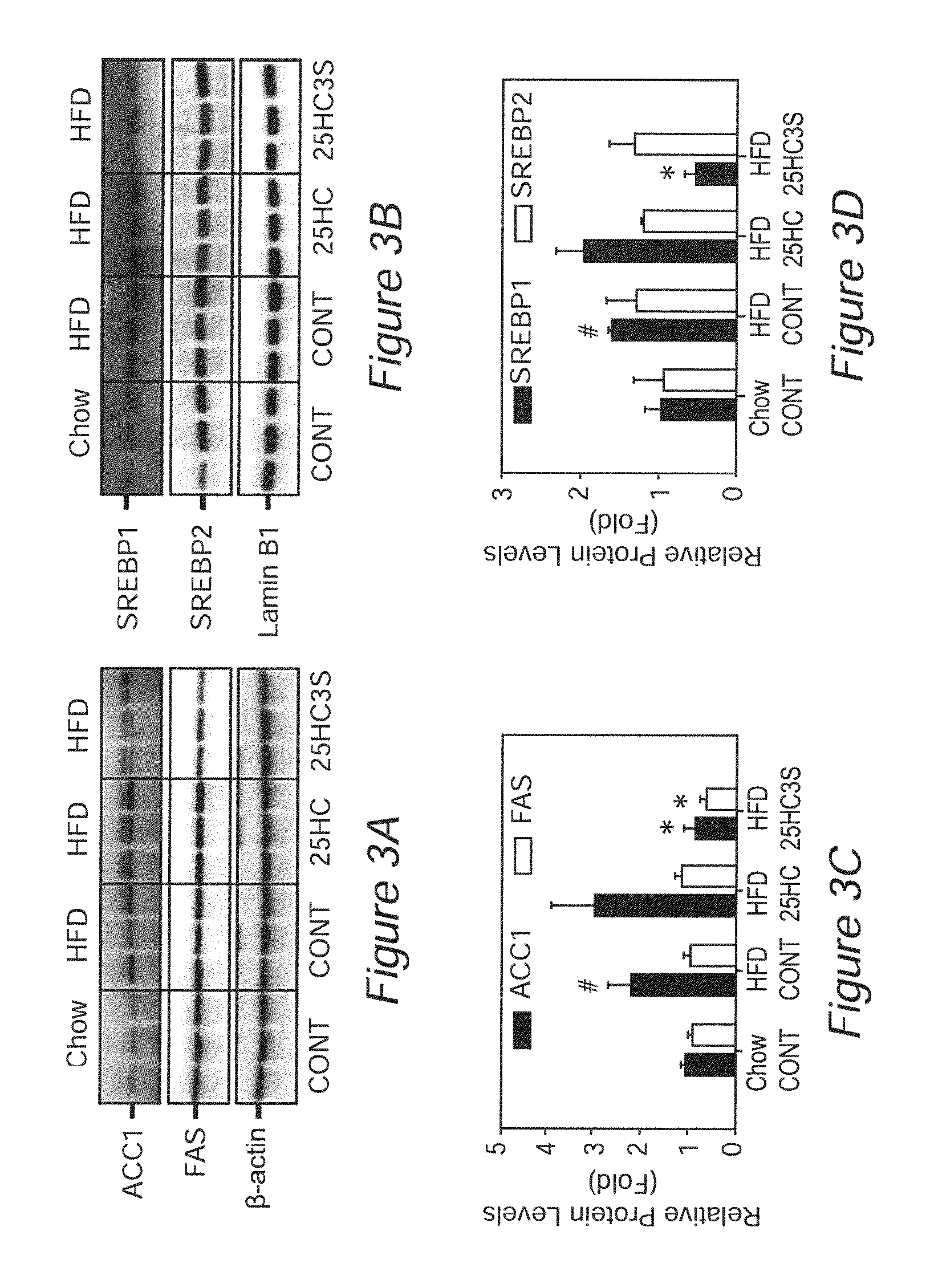Sulfated oxysterol and oxysterol sulfation by hydroxysterol sulfotransferase promote lipid homeostasis and liver proliferation
a technology of oxysterol and sulfate, which is applied in the direction of transferases, peptide/protein ingredients, metabolism disorders, etc., can solve the problems of liver damage, no way to compensate for the absence of liver function for a long time, and drastic and debilitating health consequences for subjects with liver disease or damag
- Summary
- Abstract
- Description
- Claims
- Application Information
AI Technical Summary
Benefits of technology
Problems solved by technology
Method used
Image
Examples
example 1
Reversal of Diet-Induced Serum and Hepatic Lipid Accumulation by 5-cholesten-3β,25-diol 3-sulfate in Mouse Models of Nonalcoholic Fatty Liver Disease (NAFLD)
[0072]In mammals, sterol regulatory element-binding protein-1c (SREBP-1c) preferentially controls lipogenic gene expression; and regulates fatty acid and triglyceride homeostasis. Its role in fatty acid biosynthesis and the development of fatty liver disease is well documented.
[0073]Oxysterols act at multiple points in cholesterol homeostasis and lipid metabolism. The oxysterol receptor, LXR, is sterol regulated transcription factor of lipid metabolism. Activation of LXR stimulates the expression of cholesterol efflux and clearance through ABCA1 and ABCG5 / 8, but it also up-regulates the expression of SREBP-1c, which in turn regulates at least 32 genes involved in lipid biosynthesis and transport. Therefore, activation of LXR by synthetic ligands could reduce serum cholesterol levels to protect against atherosclerosis, but it als...
example 2
Oxysterol Sulfation by SULT2B1b Suppresses LXR / SREBP-1c Signaling Pathway and Reduces Serum and Hepatic Lipids in Mouse Models of NAFLD
[0103]In the present study, we further evaluated the effect of SULT2B1b on lipid metabolism in serum and liver tissues, and possible mechanism in vivo in mouse NAFLD models.
Materials and Methods
Animals and Treatment
[0104]Eight-week-old female C57BL / 6 mice were purchased from Charles River Laboratories (Cambridge, Mass.) and LDLR− / − mice were from Jackson Laboratory (Sacramento, Calif.). Mice were hosted under a standard 12 / 1 2-hour light / dark cycle. Mice were fed with either standard rodent chow diet (Harlan Tekiad, Madison, Wis.), or a high-cholesterol diet (HCD, 3.1 Kcal / g, 2% cholesterol and 5.7% fat), or a high-fat diet (HFD, 4.5 Kcal / g, 0.2% cholesterol and 21.2% fat) for 10 weeks. Mice were then infected with recombinant adenovirus encoding CMV-driven SULT2B1b (1×108 pfu / mouse) through tail vein injection. Ad-CMV-13-Gal adenovirus was used as c...
example 3
Cholesterol Metabolite, 5-cholesten-3beta, 25diol 3-sulfate (25HC3S) Promotes Hepatic Proliferation in Mice
[0127]25HC3S is a sulfated oxysterol present in the nuclei of hepatocytes, where it plays an important role in regulating lipid metabolism In the present Example, we have shown for the first time that 25HC3S substantially up-regulates proliferative gene expression and induces DNA replication in liver. Conversely, treating mice with the liver-X-receptors (LXR) synthetic agonist, T0901317, leads to effective suppression of 25HC3S-induced proliferation, indicating the involvement of LXR signaling. These findings provide a previously undescribed function of 25HC3S in liver, and may shed light on our understanding of proliferative mechanisms regulated by the acidic pathway of bile acid biosynthesis in liver.
Experimental
Synthesis of 5-cholesten-3beta, 25-diol 3-sulfate (25HC3S)
[0128]25HC3S was synthesized as described in Example 1, with some modifications. Briefly, a mixture of 25-hy...
PUM
| Property | Measurement | Unit |
|---|---|---|
| flow rate | aaaaa | aaaaa |
| flow rate | aaaaa | aaaaa |
| pH | aaaaa | aaaaa |
Abstract
Description
Claims
Application Information
 Login to View More
Login to View More - R&D
- Intellectual Property
- Life Sciences
- Materials
- Tech Scout
- Unparalleled Data Quality
- Higher Quality Content
- 60% Fewer Hallucinations
Browse by: Latest US Patents, China's latest patents, Technical Efficacy Thesaurus, Application Domain, Technology Topic, Popular Technical Reports.
© 2025 PatSnap. All rights reserved.Legal|Privacy policy|Modern Slavery Act Transparency Statement|Sitemap|About US| Contact US: help@patsnap.com



